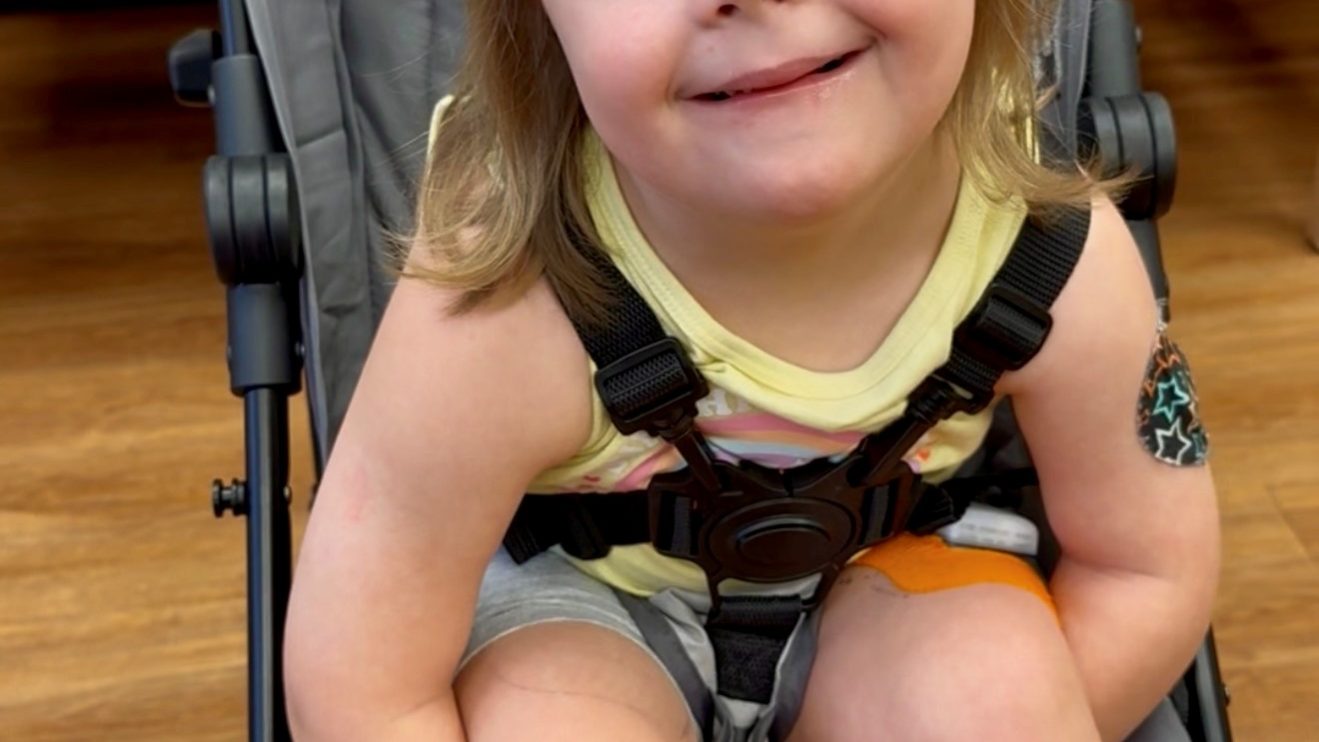Kay had her three-month endocrinology checkup this week, and it was also Maeve’s very first visit to this office. Maeve was a rockstar as always. She stayed calm, well-behaved, and even alerted to a low blood sugar during our visit, reminding us why she is such an important part of Kay’s care team.
One of the main things her doctor checks is something called an A1C. This test gives us a picture of Kay’s average blood sugar levels over the past two to three months. Unlike her finger pokes or her continuous glucose monitor, which show what her blood sugar is at that exact moment, the A1C helps doctors see the big picture of how well her diabetes has been managed over time.
Think of the A1C as a report card for blood sugar. Instead of grading math or reading, it grades how her glucose levels have been overall.
For children as young as Kay, who is four, the goal is usually to keep the A1C under 7.5 percent, although many specialists now aim for closer to 7.0 percent or even lower if it can be done safely without frequent lows. To put it into perspective, people without diabetes typically have an A1C between 4 and 6 percent.
Kay’s most recent A1C was 6.2 percent, which is an improvement from her last result of 6.7 percent. Six months ago, her A1C was in the 7s. Seeing this kind of progress makes me feel like we’re moving in the right direction, and her blood sugar management is going really well for her age.
At the appointment, the endocrinologist asked what I had been doing differently. I explained that I took a diabetes class where I learned the importance of giving insulin not only for carbohydrates, but also for fat and protein. When you are first diagnosed, the focus is on giving insulin for carbs, and you’re told you can eat whatever you want as long as you count the carbs. But that is not the full picture, and honestly, it is not very helpful long-term. I understand why they don’t want to overwhelm families with too much information right after such a life-changing diagnosis. The hard part is that even at future follow-up appointments, you rarely get more detailed resources or classes about how certain foods continue to impact blood sugar hours later, not just in the moment.
I have been working hard to pay attention to the kinds of foods Kay eats and how they affect her. My goal is to do whatever I can to reduce the big swings between high and low blood sugars. It still happens, of course, and I still let Kay enjoy her favorites. When we travel or are on vacation, perfect management often goes out the window because we are eating foods we don’t normally eat every day. But that is okay. Diabetes is already part of our lives 24/7, and sometimes it is important to loosen the reins a little and just enjoy the moment.
And through it all, Maeve is right there beside us. Whether she’s alerting in the middle of an appointment or curled up at Kay’s side at home, she gives us an extra layer of safety and peace of mind. Just like Kay’s A1C shows us the big picture of her progress, Maeve reminds us in the small day-to-day moments how much support and love are carrying us through this journey.



